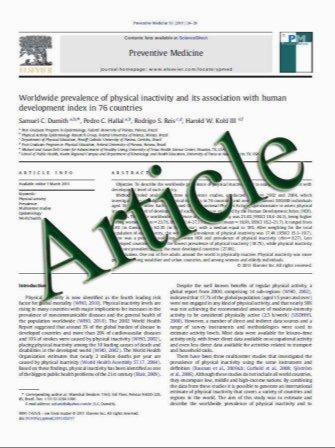The MDM2 Ubiquitination Signal in the DNA-Binding Domain of p53 Forms a Docking Site for Calcium Calmodulin Kinase Superfamily Members
- نوع فایل : کتاب
- زبان : انگلیسی
- مؤلف : Ashley L. Craig,1 Jennifer A. Chrystal,1 Jennifer A. Fraser,1 Nathalie Sphyris,1 Yao Lin,1 Ben J. Harrison,1 Mary T. Scott,1† Irena Dornreiter,2 and
- چاپ و سال / کشور: 2007
Description
Genetic and biochemical studies have shown that Ser20 phosphorylation in the transactivation domain of p53 mediates p300-catalyzed DNA-dependent p53 acetylation and B-cell tumor suppression. However, the protein kinases that mediate this modification are not well defined. A cell-free Ser20 phosphorylation site assay was used to identify a broad range of calcium calmodulin kinase superfamily members, including CHK2, CHK1, DAPK-1, DAPK-3, DRAK-1, and AMPK, as Ser20 kinases. Phosphorylation of a p53 transactivation domain fragment at Ser20 by these enzymes in vitro can be mediated in trans by a docking site peptide derived from the BOX-V domain of p53, which also harbors the ubiquitin signal for MDM2. Evaluation of these calcium calmodulin kinase superfamily members as candidate Ser20 kinases in vivo has shown that only CHK1 or DAPK-1 can stimulate p53 transactivation and induce Ser20 phosphorylation of p53. Using CHK1 as a prototypical in vivo Ser20 kinase, we demonstrate that (i) CHK1 protein depletion using small interfering RNA can attenuate p53 phosphorylation at Ser20, (ii) an enhanced green fluorescent protein (EGFP)–BOX-V fusion peptide can attenuate Ser20 phosphorylation of p53 in vivo, (iii) the EGFP–BOX-V fusion peptide can selectively bind to CHK1 in vivo, and (iv) the p53 spliced variant lacking the BOX-V motif is refractory to Ser20 phosphorylation by CHK1. These data indicate that the BOX-V motif of p53 has evolved the capacity to bind to enzymes that mediate either p53 phosphorylation or ubiquitination, thus controlling the specific activity of p53 as a transcription factor.
MOLECULAR AND CELLULAR BIOLOGY, May 2007, p. 3542–3555 Vol. 27, No. 9 Received 26 August 2006/Returned for modification 16 October 2006/Accepted 31 January 2007


